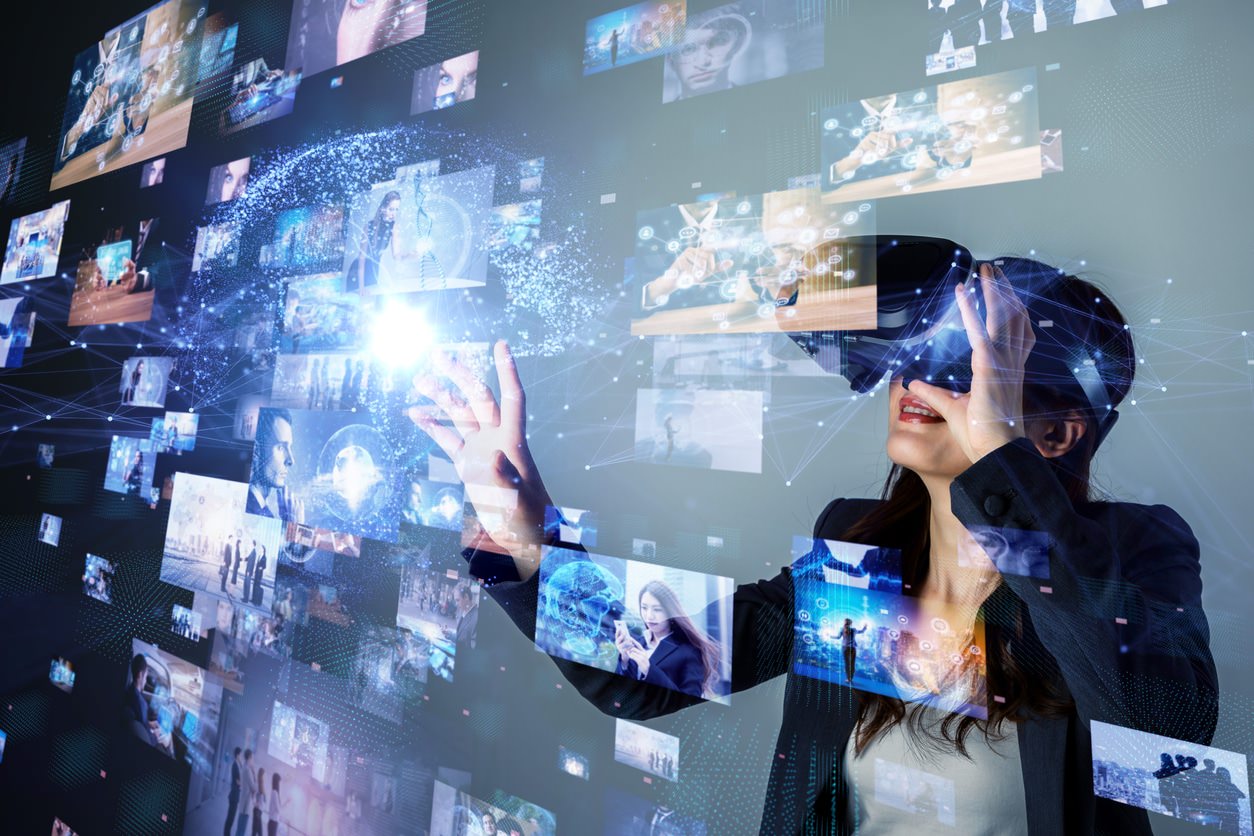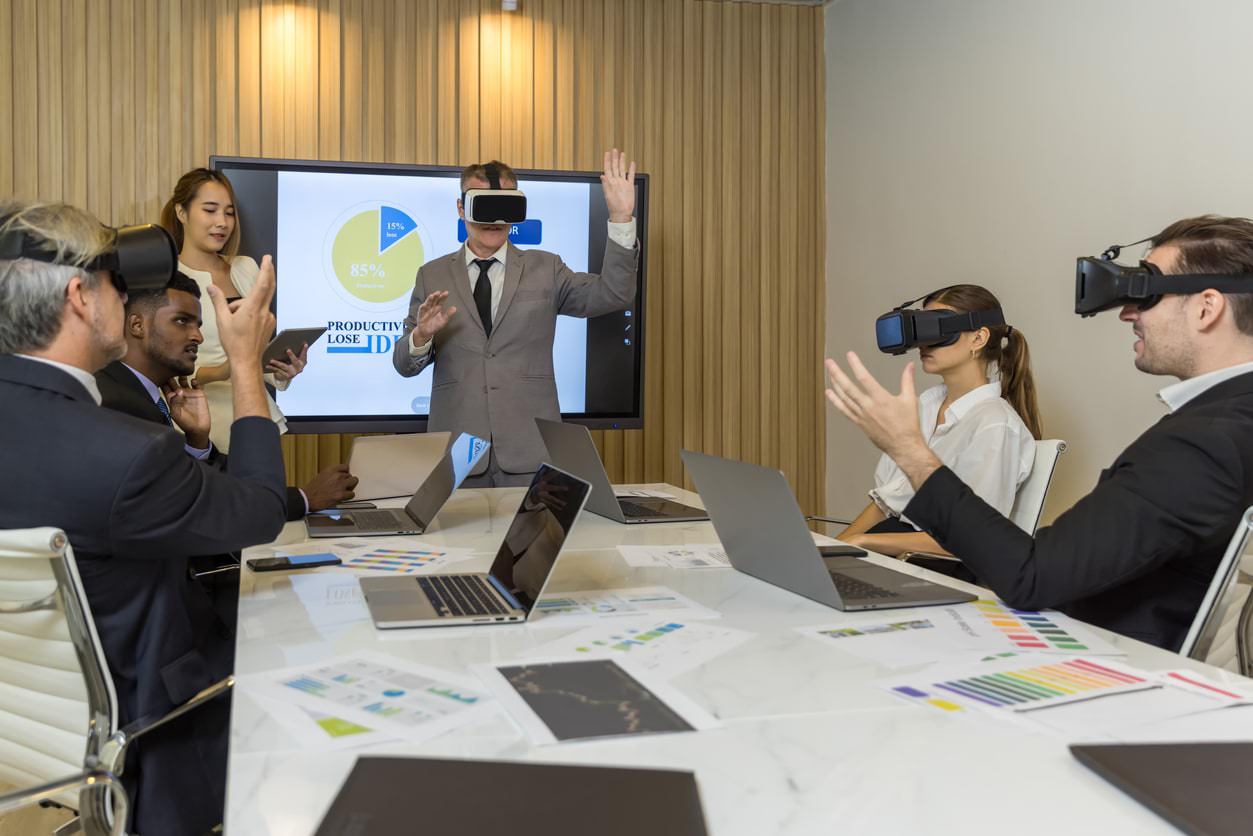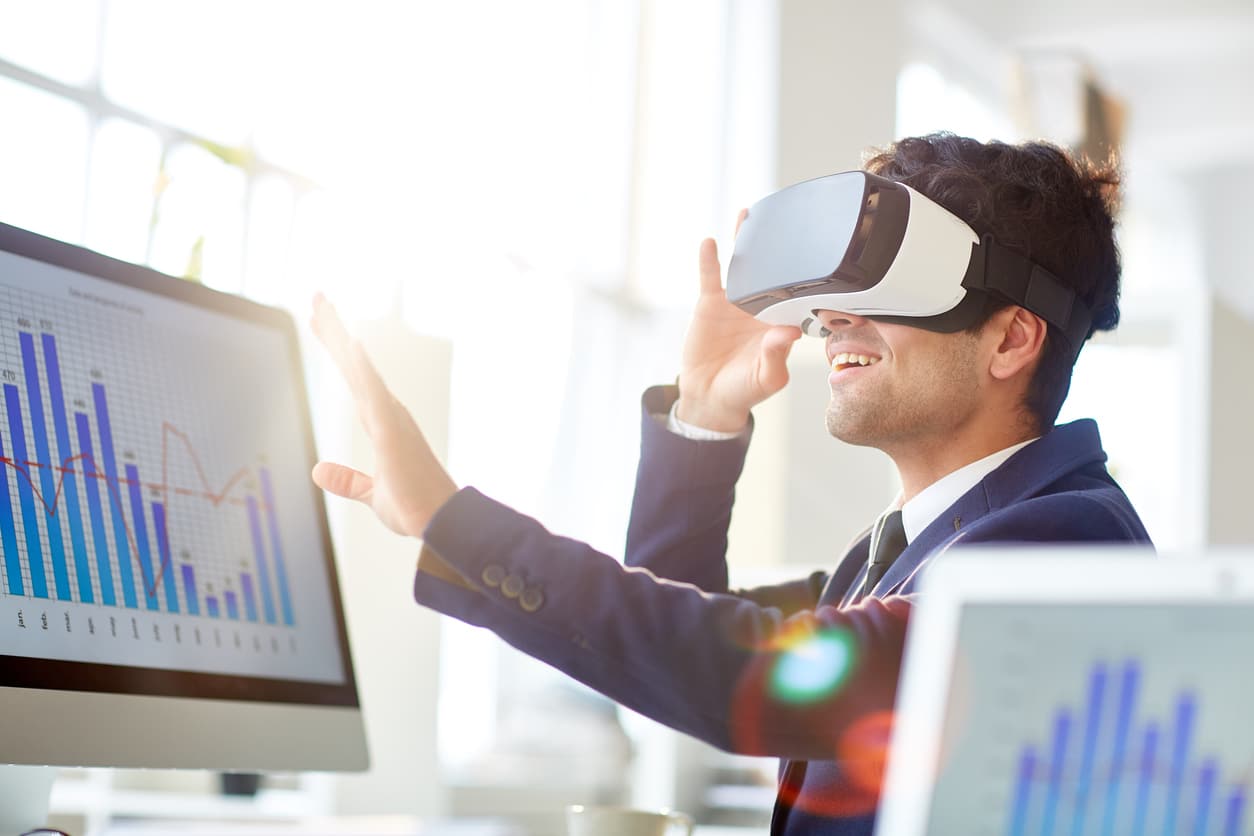We’re living in an exciting time. Advances in technology are coming at a rapid pace, offering tantalizing possibilities for how we will live, work and interact with one another in the coming years. While many of these technological advances will impact our personal lives, they’re also going to transform the way businesses operate.
Most of the buzz in recent months has been about the explosion of artificial intelligence (AI) tools and how they’re impacting businesses. But there are other technologies that are starting to be implemented in the business world that can potentially have an equally significant impact. One of these is immersive technology.
Immersive technology merges the physical world with a simulated or digital reality, allowing users to feel like they are truly a part of this digital environment. It’s providing entirely new ways of creating, displaying and interacting with content, apps and experiences. Immersive technology provides a multisensory experience, engaging the user’s sight, touch and sound in a virtual setting that feels real.
The two primary types of immersive technologies impacting the business world are augmented reality (AR) and virtual reality (VR). As we continue transitioning to a remote work environment, AR and VR technology will eliminate many of the limitations created when teams aren’t able to meet in person and allow businesses in a wide range of industries to operate more effectively and efficiently. Over the next few years, the adoption of AR and VR technologies is expected to rapidly expand, truly revolutionizing the way many businesses operate.
What Is Augmented Reality?

The digital world enhancements created by AR are delivered through devices such as smart phones, tablets or glasses.
What Is Virtual Reality?
Virtual reality immerses users in a completely simulated environment. Users are placed inside a 3D world that leverages all of their senses, allowing them to interact with this world and any other users sharing the digital space with them. Users are transported to these VR worlds using special headsets.
The fundamental difference between AR and VR technology is related to the type of world being created:
- AR uses your existing real-world environment as its foundation and allows you to place digital information on top of it to enhance your understanding of your actual physical environment.
- VR takes you into a completely digital world that isn’t grounded in your actual physical environment. This virtual world can look and feel as real as our physical world, or it can have very little resemblance to the real-world environment that we live in, transporting you into an animated scene or some other reality that differs significantly from real life.
Immersive Technologies Are Elevating the Success of Businesses
Early adopters of AR and VR technology in the business world have experienced impressive results. According to an IBM study:
- Businesses using AR technology achieved a 46% reduction in the time required to complete tasks
- VR-based training methods have resulted in a 40% reduction in training time and a 70% improvement in employee performance
In addition, a study by PwC found that VR training provides significant benefits compared with more traditional training methods:
- VR allows learners to complete training 4 times faster than individuals training in a physical, real-world classroom environment
- Individuals who undergo VR training are 275% more confident in applying the skills they’ve developed
- Individuals are 4 times more focused when using VR training methods compared with eLearning training methods
- Employees feel 3.75 times more connected to VR training content compared with other training methods
AR and VR Applications for Businesses

Recruiting and Onboarding
Recruiting and hiring the right candidates can be extremely challenging, and it’s one of the most important tasks for businesses to get right. Whether your team works in the office, remotely or in a hybrid model, AR and VR technology can help improve your hiring process in a variety of ways:
- It creates a highly engaging experience for candidates, making your company more appealing to top talent.
- It allows you to more effectively explain typical work scenarios and provide candidates with a clearer understanding of what the job entails.
- It can provide more effective ways to evaluate candidates by creating realistic scenarios that allow candidates to demonstrate their skills in a practical manner. For example, you can test collaboration and teamwork skills by creating a group game where the goal is to escape from a virtual room by solving puzzles. This provides a more objective assessment of these skills than is possible by asking the candidate to discuss ways in which they’ve collaborated with team members in the past.
Businesses with a remote workforce can also use AR and VR technology to improve the effectiveness of their onboarding process, making it easier for new employees to acclimate to your company, understand your culture and learn about how their role fits into the larger context of your organization. For example, new hires can interact with team members in a virtual environment to build a greater sense of camaraderie.
Training and Professional Development

There are a variety of benefits to leveraging AR and VR technology with your employee training program:
- Employees receive a more interactive and immersive learning experience, allowing them to visualize the subject matter on a deeper level
- Learning materials are more affordable and accessible to all employees
- Remote workforces are able to have greater interaction and collaboration with one another during training sessions
- It provides safe training conditions that can simulate hazardous work environments, allowing employees in dangerous industries to practice safety protocols without the risk of injury
- Employees can more effectively harness soft skills by providing an interactive environment to grow leadership skills, work through discrimination scenarios and gain experience in many other situations that are often more challenging to recreate in a real-world environment
- New employees can interact with more experienced team members in a virtual environment, allowing them to grow their skills and get up to speed on specific protocol at a more rapid rate
Access to Experts
AR technology is an effective way for employees to connect with industry experts in other locations who can walk them through a specific problem in a deeper way. These experts will be able to see what your employee sees and provide step by step instructions and visuals regarding how to troubleshoot the issue. This can save you time and money by avoiding the need for a specialist to be dispatched to the field to provide assistance. It also ensures issues are resolved as quickly as possible.
Remote Collaboration
During the pandemic, video chat technologies such as Zoom allowed remote teams to remain connected at a time when in-person interactions simply weren’t possible. While these technologies will continue to be used moving forward, AR and VR technology will allow remote employees to elevate their ability to collaborate with one another.
With VR technology, remote employees can sit together in a virtual office to view a presentation together. This can allow for greater interpersonal interaction than is possible over a Zoom meeting. By simulating in-person meetings, employees can participate in a more immersive way.
It also provides a more engaging way to disseminate information, as employees can be transported to a virtual version of your work environment. In these virtual spaces, employees will be able to collaborate on a project and share feedback in real time while working from anywhere in the world. This can create greater connections between remote team members and allow them to work together more effectively in spite of a remote setting.
Employee Engagement
Maintaining high levels of employee engagement can often be more challenging in remote and hybrid work environments. Not only is it harder to build camaraderie, but large numbers of Zoom meetings can create fatigue and increase employee burnout. AR and VR technology provides businesses with a more effective way to improve employee engagement in remote and hybrid environments, giving team members a more authentic way to connect and interact.
VR technology can allow you to host a wide range of virtual gatherings to bring your team together. These gatherings can involve work-related matters, but they can also be used to improve team building among a remote workforce that isn’t able to see each other face to face. For example, you can host after work virtual game nights that are attended by employees living all over the country (or the world).
Data Analysis

Not only can you obtain a more holistic view of data, but AR and VR enable a greater density of data to be displayed at once. This allows your team to process the information much faster than is possible when viewing static reports.
Trending AR/VR Devices to Watch
AR and VR technology is still in its infancy, but some early adopter businesses are already starting to test the possibilities that this technology can provide. It’s highly likely that in the next few years, more and more businesses will begin leveraging AR and VR technology in some capacity.
There are two trending AR/VR devices which seem poised to play a major role in the early usage of immersive technology by businesses:
- Apple Vision Pro
- Meta Quest Pro
Apple Vision Pro
Apple has announced the creation of a new AR/VR device (they refer to it as a spatial computer) called the Vision Pro. Currently scheduled for release in early 2024, the Apple Vision Pro seems poised to become an industry leader in this new technology. While its price may limit the businesses able to use it at first, the Apple Vision Pro has the potential to offer robust capabilities that will improve productivity and efficiency.
The Vision Pro will be operated by a headset that provides users with 3D display capabilities. Users will have access to numerous virtual screens that are accessible in AR and VR formats. In addition, they will be able to interact with 3D objects and collaborate with each other when using the device.
Users will be able to use several of Apple’s apps with the Vision Pro, including its:
- Freeform brainstorming app
- Keynote presentation tool
- FaceTime for video meetings
In addition, the Vision Pro will integrate with a variety of Microsoft productivity apps, including Word, Excel and Teams. Zoom and Cisco apps will be available as well. Over time, Apple will make the device compatible with a wider range of productivity and collaboration apps, offering even more ways for businesses to leverage this technology.
Meta Quest Pro
The social media giant Meta has also entered the AR/VR conversation. While initial devices were more focused on gaming applications, their Quest Pro headset is specifically intended for use in business applications. It has tremendous potential to enhance collaboration between team members working in remote and hybrid environments.
As with the Apple Vision Pro, the Quest Pro includes integrations with a variety of productivity apps such as Microsoft Windows 365 and Teams. Users can also join a Teams meeting from inside Meta Horizon Workrooms.
Predicting the Potential Impact of AR/VR Technology for Businesses
AR and VR technology is still in its early stages, and the extent of its impact on businesses is still uncertain. However, it offers the potential to transform the ways in which businesses operate over the next decade. As we continue shifting to remote and hybrid working models, tools that enhance your team’s ability to collaborate from different locations will become increasingly valuable. By leveraging AR and VR technology, businesses will be able to collaborate remotely in ways we never thought were possible, elevating the productivity and performance of your employees.
The rapid growth market size for immersive technology is one of the strongest indicators that it may play a major role in the way businesses operate in the near future. According to Statista, the global AR and VR market was $29.26 billion in 2022, and it’s expected to exceed $100 billion by 2026. While some of this market size is associated with gaming applications, it seems clear that this technology is on the verge of revolutionizing the business world as well.
The initial cost of this technology may prove to be a barrier for some smaller businesses, but it’s likely that the price of AR and VR devices will come down as the technology improves. This will make it more accessible to businesses at a time when there will be even more apps available to help optimize the productivity, efficiency and collaboration of businesses.
Due to its potential to truly transform the ways businesses operate, it’s critical that all businesses monitor the advances in AR/VR technology over the next five to ten years. It’s likely that within the next decade, it will play a critical role in the success of your business.
